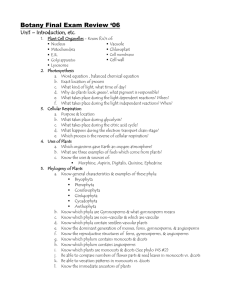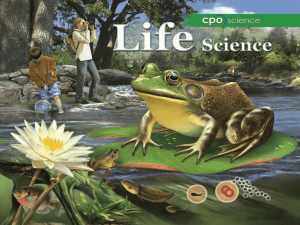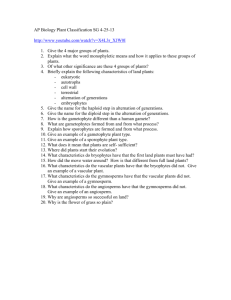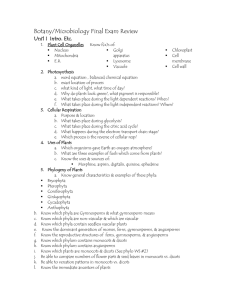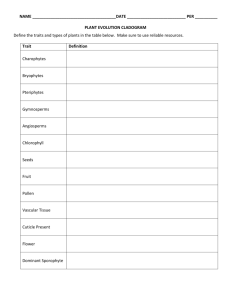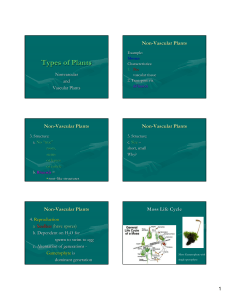Plant Diversity Lab Name_________________
advertisement
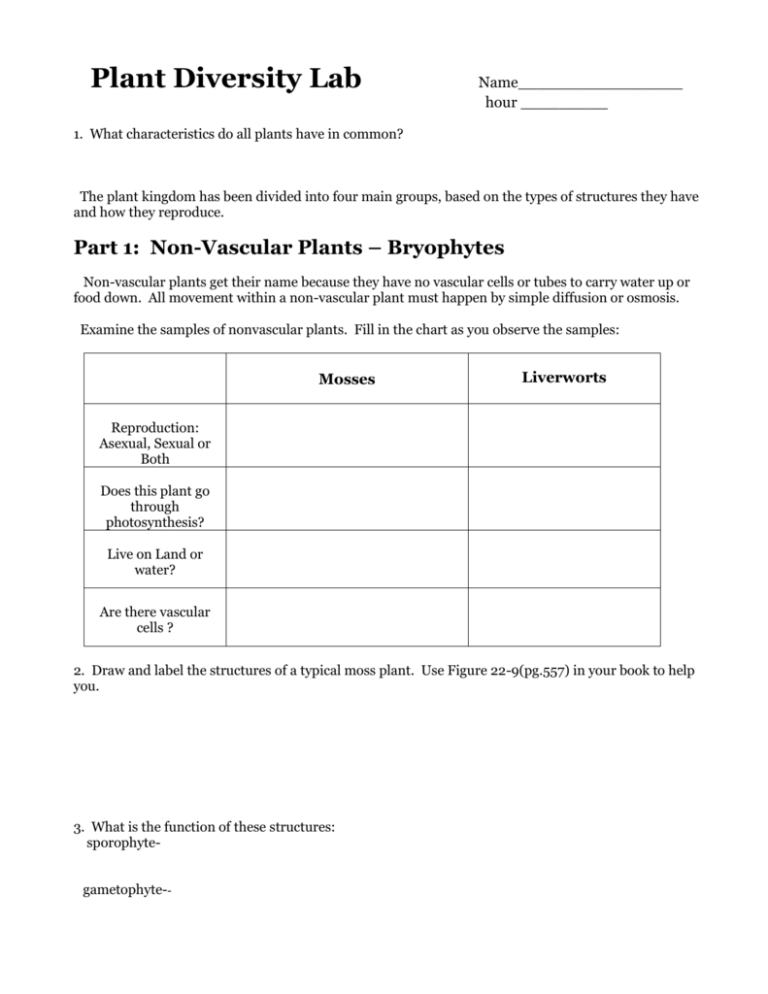
Plant Diversity Lab Name_________________ hour _________ 1. What characteristics do all plants have in common? The plant kingdom has been divided into four main groups, based on the types of structures they have and how they reproduce. Part 1: Non-Vascular Plants – Bryophytes Non-vascular plants get their name because they have no vascular cells or tubes to carry water up or food down. All movement within a non-vascular plant must happen by simple diffusion or osmosis. Examine the samples of nonvascular plants. Fill in the chart as you observe the samples: Mosses Liverworts Reproduction: Asexual, Sexual or Both Does this plant go through photosynthesis? Live on Land or water? Are there vascular cells ? 2. Draw and label the structures of a typical moss plant. Use Figure 22-9(pg.557) in your book to help you. 3. What is the function of these structures: sporophytegametophyte-- PART 2: Seedless Vascular Plants- Ferns 4. The leaves of a fern are called fronds. Write a complete description of a fern frond. Use a metric ruler to give size, and then describe the color, shape, and structure. 5. Pull off one section of a frond and make a wet mount slide of the underside. Using low power draw one of the sori that you observe. 6. What happens during the haploid stage of the gametophyte? 7. What happens during the diploid stage of the sporophyte? Part 3: Seed Plants – Gymnosperms (Conifers) 8. An important adaptation of gymnosperms is that they can reproduce without water. Why is this an advantage? 9. Describe how reproduction of gymnosperms takes place? 10. Describe the leaf shape of this plant. 11. List several examples of conifers. 12. Where does photosynthesis take place in this type of plant? Part 4: Seed Plants – Angiosperms (Flowering Plants) 13. Describe the reproductive structure of an angiosperm. 14. Draw the leaf of 2 different types of angiosperms. Include detail such as stems, veins, etc. 15. Compare the Ferns, Gymnosperms, and Angiosperms: Ferns Gymnosperms Angiosperms Which part of the plant goes through photosynthesis? Does this plant have roots? Does this plant have vascular tissue? Part 5: Summary Look at the demonstration with celery and answer the following questions. 1. Measure how far the colored water has risen up the celery stem. ________________ 2. Look at the paper strip and measure how far the colored water has risen. ___________ 3. Is the celery a vascular or nonvascular plant? ______________________________ 4. What do vascular plants have that non-vascular plants do not? __________________ _____________________________________________________________ 5. Count the number of tubes in the celery stem. _____________________________ 6. Which plants grow taller, non-vascular or vascular plants? Why? 7. Define the term tracheid. Part 6: Mystery Plants Go to the computer and identify the mystery plants: Write the name of the group each plant belongs to after the letter. Here are your choices: Moss, Liverwort, Fern, Gymnosperm, Angiosperm A. ______________________ E. _______________________ B. _______________________ F. _______________________ C. _______________________ G. _______________________ D. _______________________ H. _______________________



